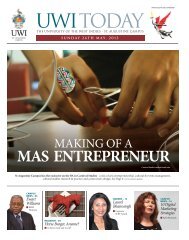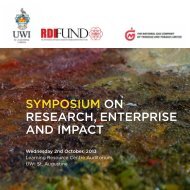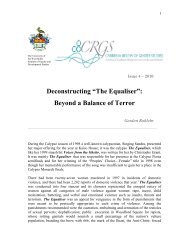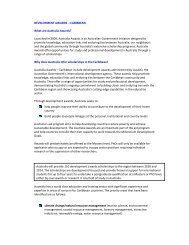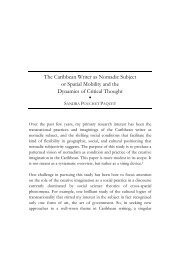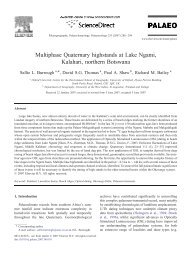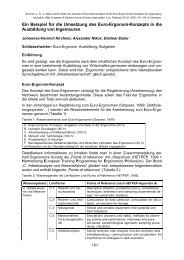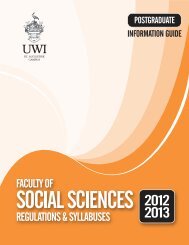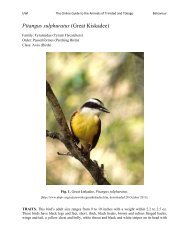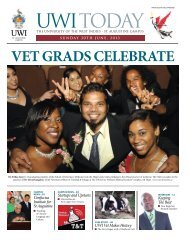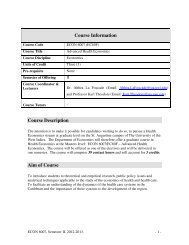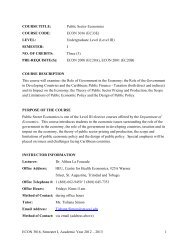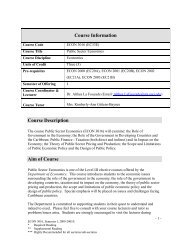Faculty of Humanities and Education (Postgraduate) - The University ...
Faculty of Humanities and Education (Postgraduate) - The University ...
Faculty of Humanities and Education (Postgraduate) - The University ...
You also want an ePaper? Increase the reach of your titles
YUMPU automatically turns print PDFs into web optimized ePapers that Google loves.
16<br />
POSTGRADUATE REGULATIONS & SYLLABUSES 2012 - 2013<br />
THE FACULTY OF HUMANITIES & EDUCATION<br />
COURSE DESCRIPTIONS:<br />
MA Creative Design: Entrepreneurship<br />
YEAR: I<br />
SEMESTER: I, II, <strong>and</strong> III<br />
COURSE CODE: CDEN 6000<br />
COURSE TITLE: CREATIVE DESIGN PROJECT<br />
NUMBER OF CREDITS: 12<br />
COURSE DESCRIPTION: <strong>The</strong> Creative Design Project is a<br />
yearlong course that seeks to synthesize all the knowledge <strong>and</strong><br />
skills content from the courses <strong>of</strong> the programme in a realizable<br />
project that can be evaluated by means <strong>of</strong> a submission <strong>of</strong> a<br />
portfolio. <strong>The</strong> supervisor(s) <strong>of</strong> each project will provide guidance<br />
along the way. Students will make presentations <strong>and</strong> engage in<br />
discussions to refine <strong>and</strong> problem-solve issues that may arise<br />
that are peculiar to a project chosen.<br />
It is in the realization <strong>of</strong> this project that students will be given<br />
the opportunity to fully contextualize their projects within the<br />
Caribbean <strong>and</strong> underst<strong>and</strong> the larger global context. Students<br />
will gain a practical underst<strong>and</strong>ing <strong>of</strong> the techniques <strong>and</strong><br />
skills for interrogating <strong>and</strong> selecting design concepts with the<br />
potential to be produced as entrepreneurial practice.<br />
OBJECTIVES<br />
At the end <strong>of</strong> the course students will be able to:<br />
• Demonstrate contextualization <strong>of</strong> design ideas in class<br />
presentations;<br />
• Analyze the cognitive, physical <strong>and</strong> social factors in design<br />
cultures;<br />
• Develop written proposals <strong>and</strong> presentations for design<br />
ideas;<br />
• Develop a project portfolio to fully document the process<br />
<strong>and</strong> product <strong>of</strong> a design project.<br />
CONTENT<br />
• Exploring ideas for final design object, product,<br />
environment, system or service<br />
• Brainstorming design ideas<br />
• Observing user needs<br />
• Design analysis (cognitive, social <strong>and</strong> cultural factors)<br />
• Form generation processes<br />
• Production methods<br />
• Case studies in design<br />
• Design proposal writing <strong>and</strong> presentation<br />
• Research methodology with design project specificity<br />
• Portfolio development<br />
DELIVERY<br />
Lectures, seminars, workshop investigation, case studies <strong>and</strong><br />
student presentations <strong>and</strong> feedback. A Creative Design Project<br />
Portfolio will be required by the end <strong>of</strong> Semester III.<br />
ASSESSMENT<br />
Creative Design Project Portfolio 100%<br />
YEAR: I<br />
SEMESTER: I<br />
COURSE CODE: CDEN 6001<br />
COURSE TITLE: THE NATURE OF CREATIVITY<br />
NUMBER OF CREDITS: 4<br />
COURSE DESCRIPTION: Creativity is not purely the remit <strong>of</strong><br />
the designer but is a discipline engaged with across the entire<br />
business environment. A lack <strong>of</strong> it can destroy an organisation’s<br />
ability to compete in the market place, whereas unchecked, it<br />
can result in chaotic <strong>and</strong> unrealistic solutions to problems. <strong>The</strong><br />
key is its effective management. This can only be achieved by<br />
first identifying <strong>and</strong> underst<strong>and</strong>ing the nature <strong>of</strong> creativity;<br />
something even the most successful <strong>of</strong> practitioners can<br />
struggle with, but what this course aims to investigate.<br />
Creativity is both a philosophy <strong>and</strong> a set <strong>of</strong> processes used<br />
consciously <strong>and</strong> unconsciously. Initial discussions will define<br />
the terms <strong>and</strong> explore key ideas in relation to creativity within<br />
the context <strong>of</strong> Small <strong>and</strong> Medium Enterprises (SMEs), <strong>and</strong> in<br />
particular those within complex product or service industry.<br />
<strong>The</strong> historical <strong>and</strong> academic paradigm <strong>of</strong> creativity <strong>and</strong> its<br />
philosophy will be explored <strong>and</strong> the key figures <strong>and</strong> their<br />
influence on the discipline investigated.<br />
<strong>The</strong> interface <strong>of</strong> activities, their overlap <strong>and</strong> divergence, are<br />
considered as key drivers <strong>of</strong> the creative process within industry.<br />
Creativity <strong>and</strong> innovation are symbiotically <strong>and</strong> intrinsically<br />
linked. <strong>The</strong> discussion will include product, environment,<br />
systems <strong>and</strong> services while engaging with the convergence <strong>and</strong><br />
divergence <strong>of</strong> practice between them.<br />
Students will analyse SMEs to identify the existence, extent<br />
<strong>and</strong> purpose <strong>of</strong> creativity as both theoretical <strong>and</strong> practical<br />
processes <strong>and</strong> begin to investigate qualitative <strong>and</strong> quantitative<br />
methodologies to measure success. This will enable them to<br />
identify the presence <strong>and</strong> nature <strong>of</strong> creative endeavour, the<br />
environment <strong>and</strong> factors necessary to nurture it <strong>and</strong> as a result<br />
become more effective in its utilisation.<br />
OBJECTIVES<br />
At the end <strong>of</strong> this course students will be able to:<br />
• Identify, define <strong>and</strong> investigate creativity as a concept;<br />
• Analyze creativity from both historical <strong>and</strong> current<br />
perspectives <strong>and</strong> discuss its philosophy;<br />
• Identify <strong>and</strong> evaluate creativity in the context <strong>of</strong> the SME in<br />
both design <strong>and</strong> non-design activities;<br />
• Develop a methodology for identifying <strong>and</strong> evaluating<br />
creativity within design <strong>and</strong> non-design activities <strong>of</strong> a<br />
SME.<br />
CONTENT<br />
<strong>The</strong> nature <strong>of</strong> creativity<br />
• <strong>The</strong> definitions <strong>of</strong> creativity<br />
• <strong>The</strong> theory <strong>of</strong> creativity<br />
• Perceptions <strong>of</strong> creativity as an entity<br />
• Creative activity within design- <strong>and</strong> non-design-based<br />
organisations<br />
• Key figures <strong>and</strong> their influence on the creativity debate<br />
• Discussion <strong>of</strong> the philosophy <strong>of</strong> creativity<br />
• Identification <strong>and</strong> discussion <strong>of</strong> creativity in an historical<br />
context



